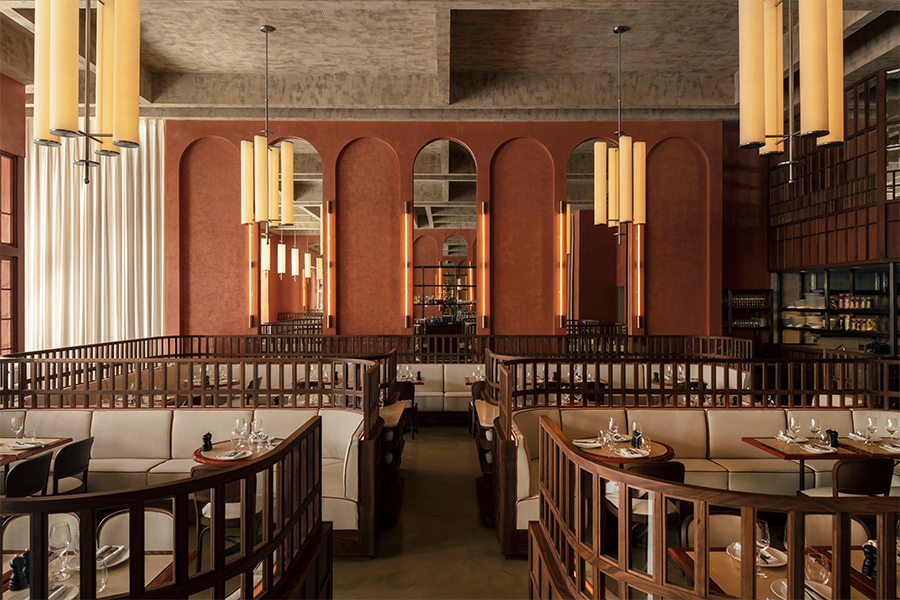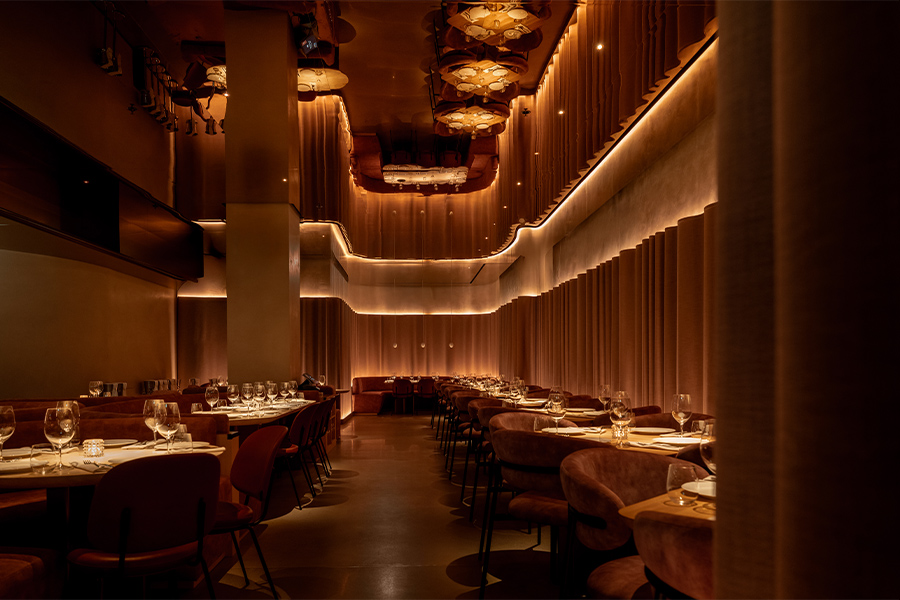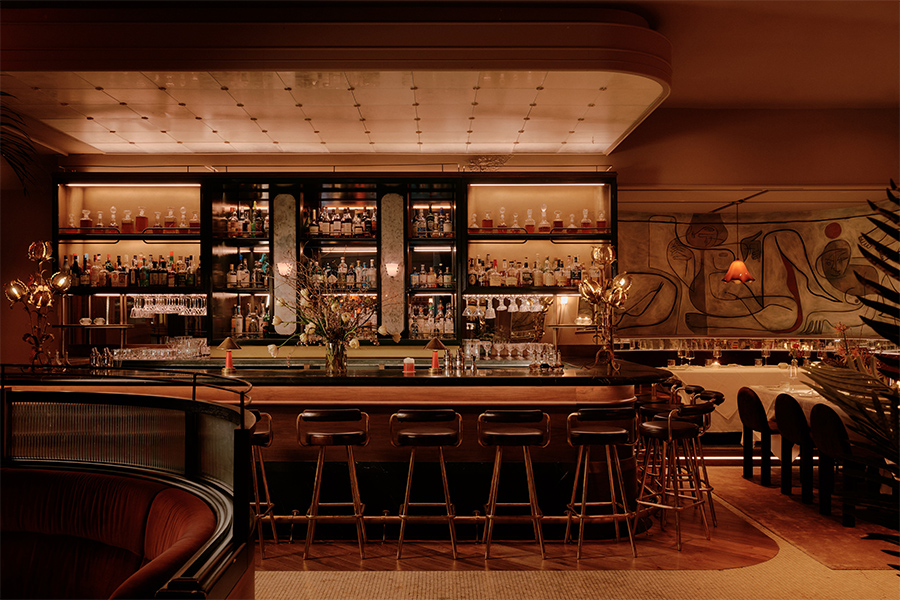Defined by tall slim arches, La Fábrica, on the fringes of Barcelona, was revitalized in 1973 by Spanish architect Ricardo Bofill. It “manages to make a monumental cement factory conversion feel cozy and intimate,” says John Whelan, the London-based founder and creative director of the Guild of Saint Luke, a consortium of artists, architects, and artisans best known for restoring Parisian brasseries.
The reimagining of that neglected sprawling complex into Bofill’s home and offices was the starting point for Maison François, the Guild of Saint Luke’s first London project, which was designed in collaboration with Kent, England-based Offset Architects and local studio Stileman Lighting Design. “We inherited a giant concrete cube from the landlords, with no discernible features,” points out Whelan, but the 5,000-square-foot bilevel restaurant in Mayfair soon began to take shape.
Drawing from grand French tradition, “we wanted to create a brasserie that was of its time but also timeless,” says Whelan. “Many brasserie designs are pastiches of the Art Deco period, perceived to be the safest and most glamorous route. We instead took a more brutalist, postmodern direction but with some luxurious materials to refine the experience.”
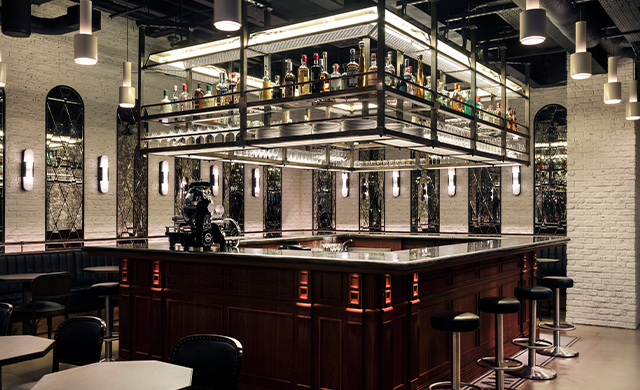
Downstairs, an industrial ethos permeates Frank’s wine bar
To make the large volume feel inviting “without losing any of its gravitas,” as Whelan puts it, the Guild of Saint Luke contrasted metals like nickel, brass, and bronze with warm woods—such as walnut and sapele mahogany—and oatmeal-colored linen upholstery and sheer curtains.
Above the floating pass in the open kitchen is a dramatic clock that calls to mind 1970s Rado watches and vintage Rolls-Royce grilles, although Whelan is partial to the cold cathode sconces, because “their warm fizz cuts through the more traditional elements of the design like a light saber.”
Curved banquettes reference pews from a modernist church in Germany and chandeliers are informed by late German designer Fritz August Breuhaus, who developed the interiors for the Hindenburg passenger airship. Arched walls are finished in a terracotta Venetian stucco reminiscent of the Mediterranean “to suggest the passage of time,” adds Whelan and, with an assist from decorative painters, the ceiling is covered in a patina of custom faux cement.
Moving downstairs to Frank’s wine bar, the vibe is more casual and industrial, combining whitewashed brick with polished concrete, an oak-paneled bar, and mirrored panels that naturally take the shape of arches. “There is a tactile quality to the room,” says Whelan, “which feels almost homely.”
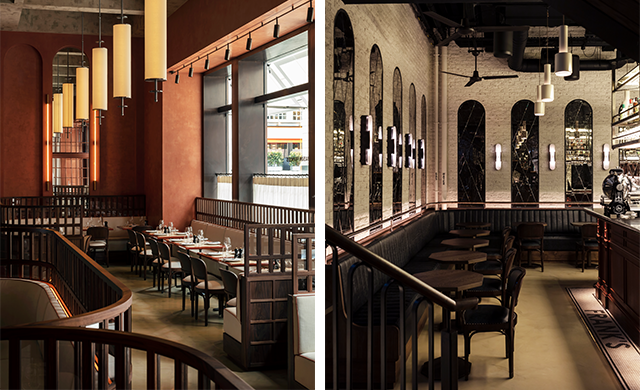
Metals juxtapose warm, tactile materials throughout the 5,000-square-foot restaurant

